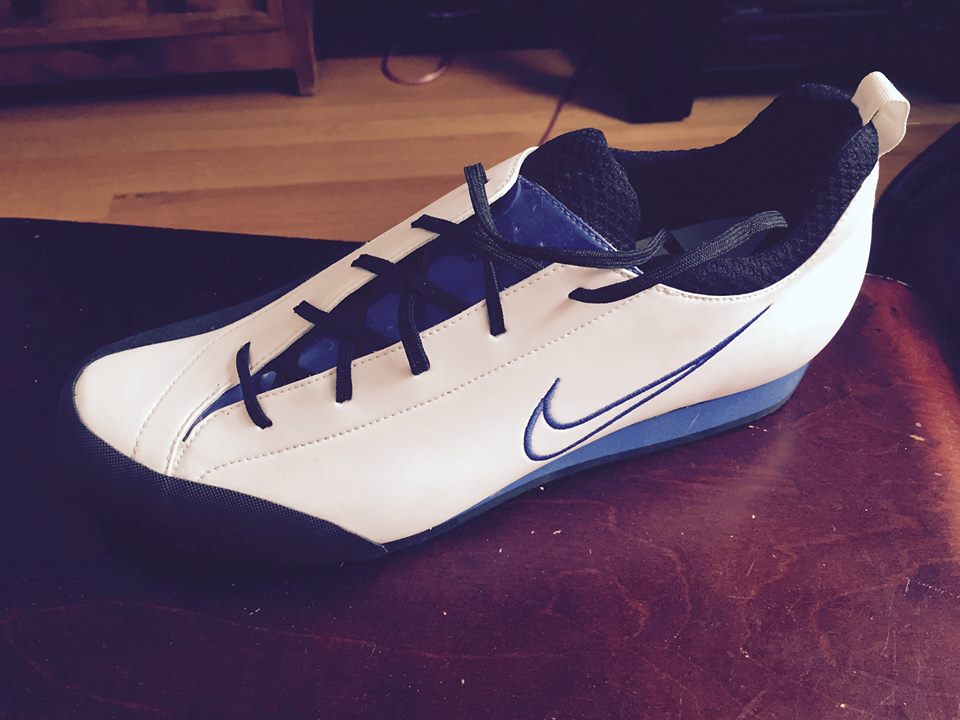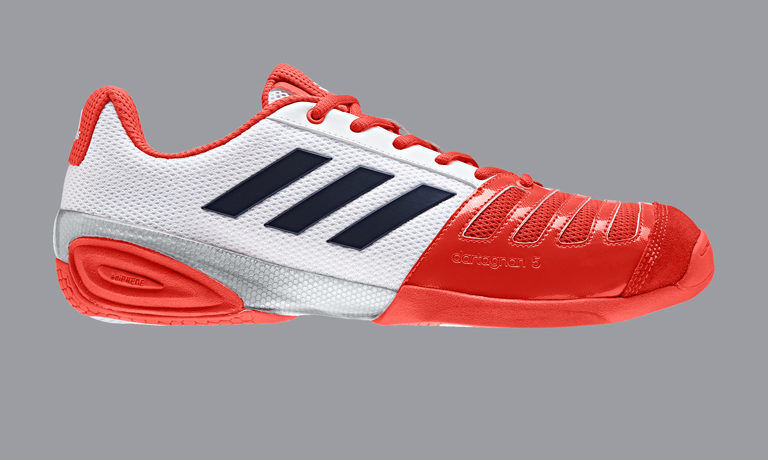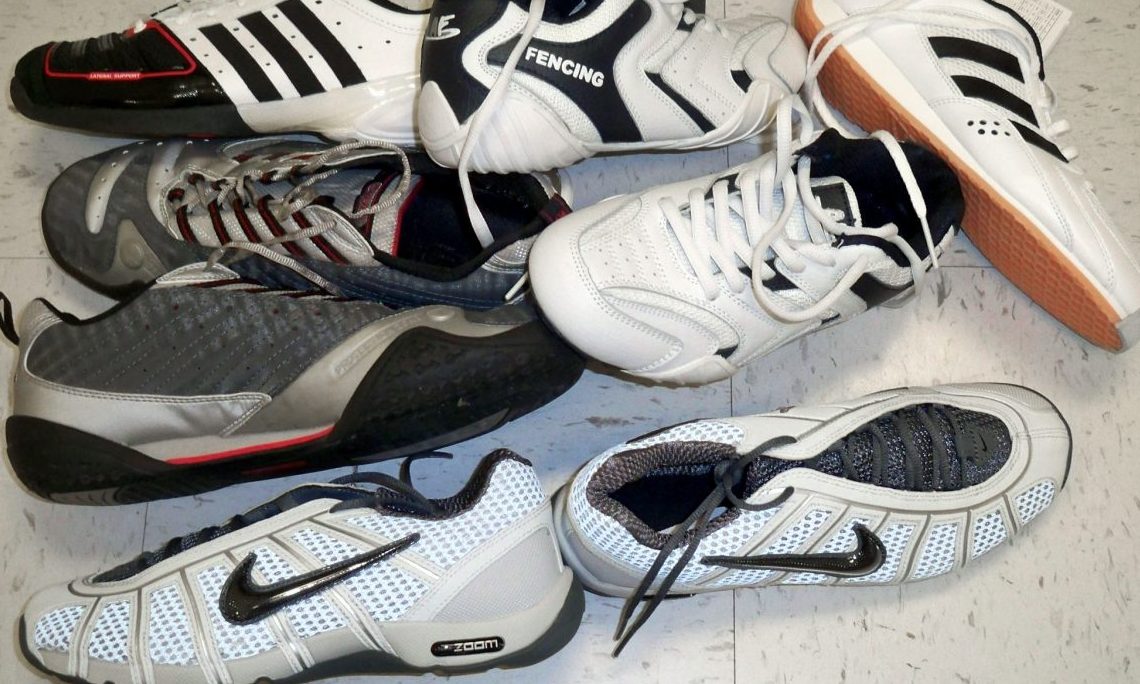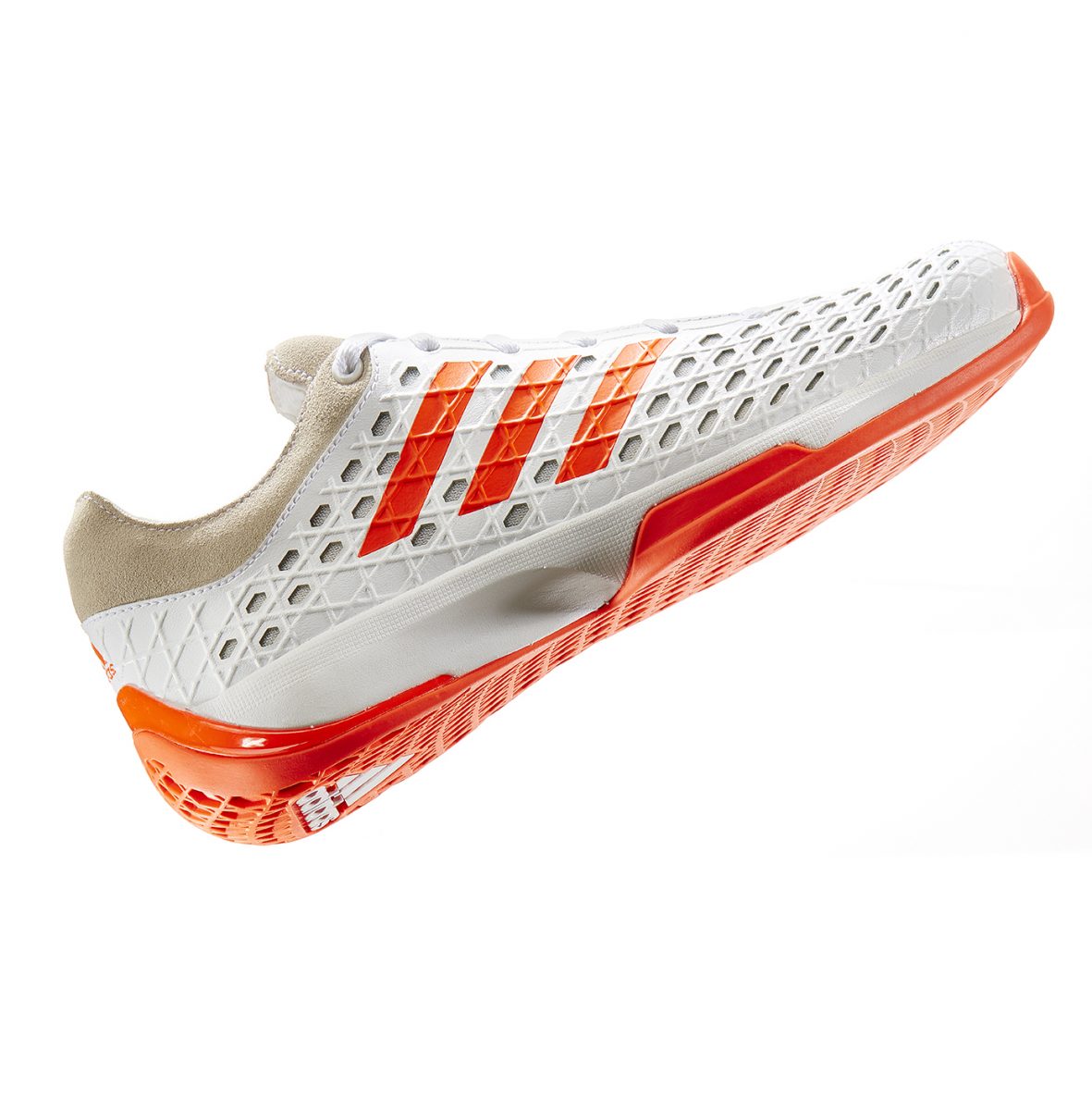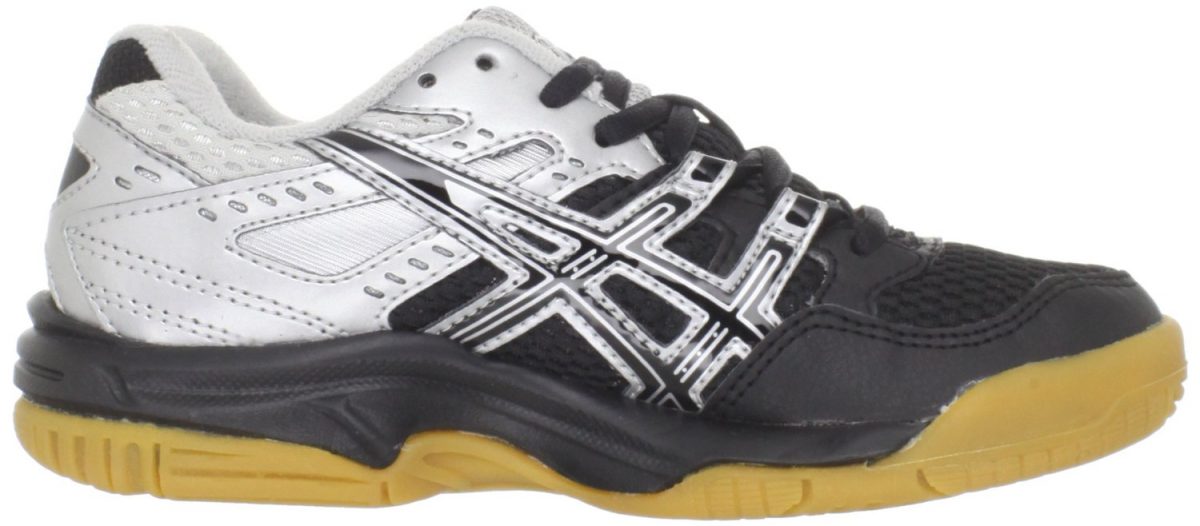If you wanted a fencing shoe that had the lacing offset to prevent wear of the laces, you’ll need to pay Nike.
I stumbled on a patent that Nike submitted by invetors Bruce J. Kilgore and Ciro Fusco. The patent mentions “an asymmetric article of footwear” and is a look at the early stages of development of the Nike Ballestra shoe.
Looking closely at the claims and patent drawings, you can see where some of the elements were refined into what became the Nike Ballestra.
After I posted the patent link to Facebook, I found some posted pictures of the actual prototypes:
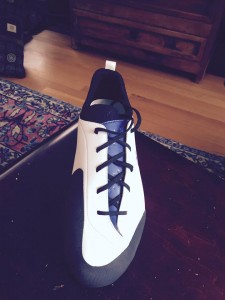
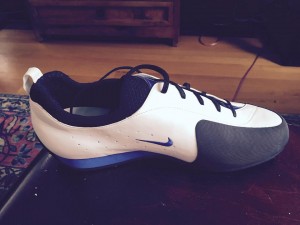

From the patent, it’s obvious that the design ideas from the Adidas Asymmetric shoes were explored, but ultimately rejected to explore this design space:
Efforts have been made to account for asymmetrical motions between the feet in fencing shoes. For example, U.S. Pat. No. 6,430,847 discloses using different shoes for the leading and trailing foot, to account for the asymmetric motions of one foot with respect to the other foot. This is to allow each foot to perform optimally.
However, there remains a need in the art for a shoe which accounts for the asymmetric motions of a foot, such as how the leading foot of a fencer tends to be dragged more on the medial side of the toe region and flexed more on the lateral side of the toe region.
It’s interesting to see this early Nike Fencing work and how some of the concepts made it into the final fencing shoe.


